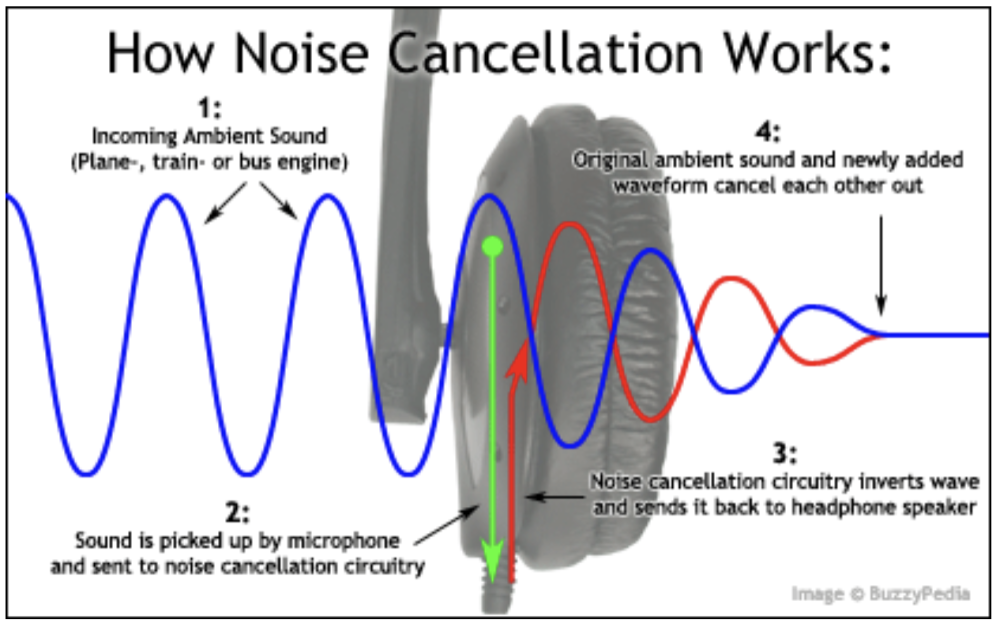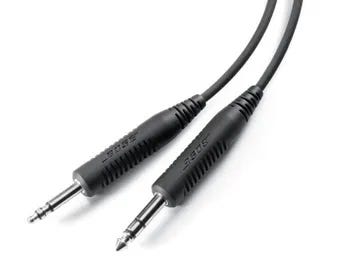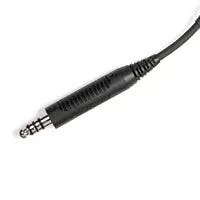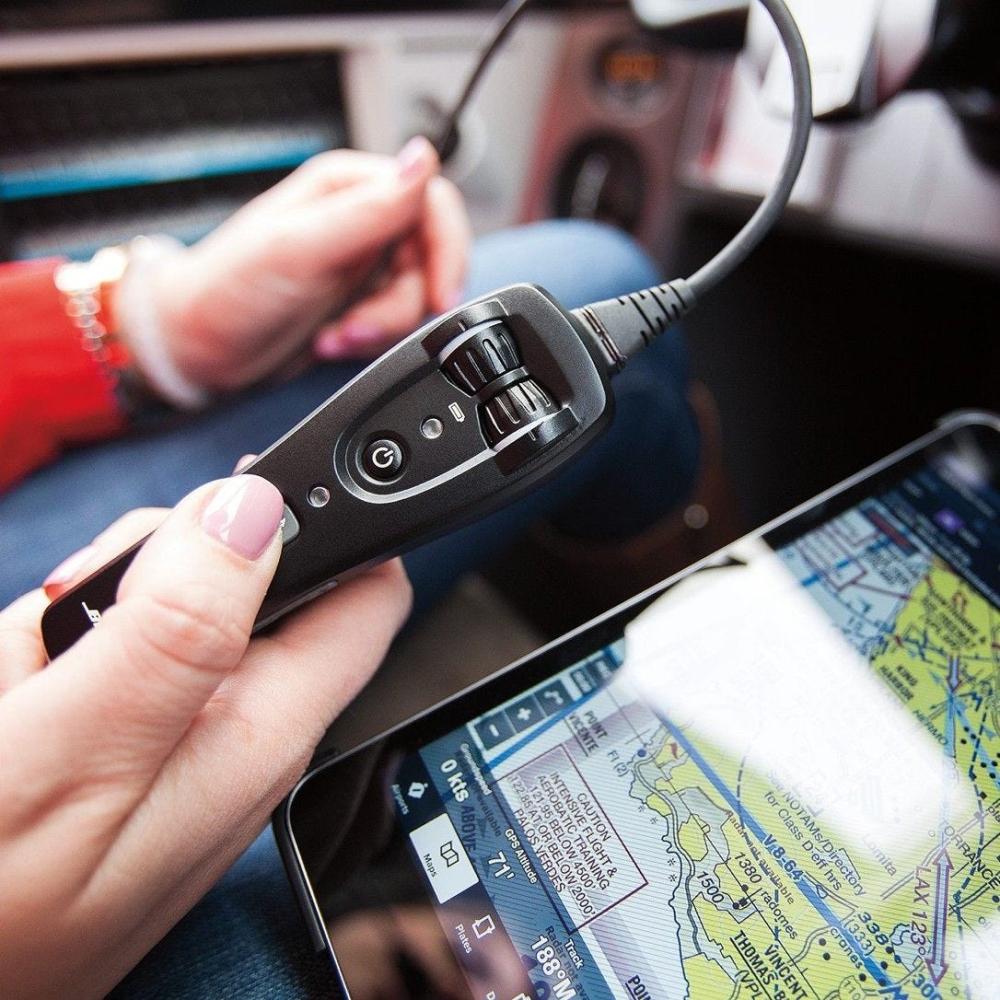Selecting the right aviation headset is a big decision for any pilot, impacting comfort, clarity, and even safety during flight. A well-designed headset not only ensures clear communication with air traffic control and other pilots but also provides crucial noise reduction, which helps minimize distractions and fatigue. Whether you’re flying short routes or a cross-country flight, the right headset can make all the difference in the cockpit. content that makes flying safe and fun.
Why Choosing the Right Headset Matters
Clear communication is vital in aviation, where precise instructions and timely responses can make all the difference. A high-quality headset ensures that pilots can clearly hear and be heard by air traffic control and other pilots, even in noisy environments. The clarity of the audio—both incoming and outgoing—can help prevent misunderstandings, contributing to a safer and more efficient flight experience.
Comfort is equally important, especially on longer flights. A well-designed headset with adjustable headbands, cushioned ear cups, and proper weight distribution can make longer flights more manageable, minimizing pressure points and reducing fatigue. Additionally, effective noise-canceling features can boost comfort by reducing constant engine noise which also allows pilots to hear important sounds more clearly– like changes in engine performance– helping pilots stay more relaxed. A comfortable headset allows pilots to stay focused on flying rather than adjusting their equipment.
Durability is another key consideration. Aviation headsets must withstand frequent use in various conditions, from hot days in the cockpit to storage in your flight bag. A reliable headset made from high-quality materials, such as durable polymer plastics or metal, will resist wear and tear without compromising performance. Investing in a headset that maintains its integrity over time ensures reliable operation, flight after flight.
While cost may be a factor, investing in a high-quality headset is a long-term decision that pays off in enhanced safety, clarity, comfort, and durability, ultimately improving the overall flying experience. At Sporty’s, we offer a carefully curated selection of high-quality aviation headsets to suit your needs.
Types of Aviation Headsets: PNR vs. ANR
When choosing a headset, one of the first decisions you’ll need to make is whether to go with Passive Noise Reduction (PNR) or Active Noise Reduction (ANR) technology, as both offer distinct approaches to blocking out cockpit noise while enhancing your flying experience. Each type comes with its own advantages, so understanding how they work and what best fits your flying environment and preferences is key to making the right selection.
Passive Noice Reduction (PNR) Headsets
PNR headsets use passive noise cancellation, meaning they rely on thick, sound-reducing materials such as dense ear cups to physically block external noise. By creating a seal around your ears, they reduce cockpit noise without requiring any electronic components. Think of those big, clunky earmuffs your dad wears when mowing the lawn—the ones you laughed at because they look a bit ridiculous. PNR headsets are kind of like that but with an upgrade. They may not win any style points, but they do a great job of blocking out cockpit noise, which is what matters while flying. Maybe your dad was onto something after all.
PNR headsets tend to be more rugged and are widely used by pilots flying in louder environments like general aviation (GA) aircraft. These simple yet durable designs with no reliance on batteries to power them are typically more affordable than their ANR counterparts. You may notice that PNR headsets typically advertise their Noise Reduction Rating (NRR) in decibels (dB), while ANR headsets usually don’t. This difference comes down to how each technology reduces noise and how it’s measured (more on that in a bit).
Active Noise Reduction (ANR) Headsets
ANR headsets are equipped with electronic systems that actively cancel out external noise. They work by detecting ambient noise and generating sound waves that neutralize it. This makes ANR headsets particularly effective in loud environments, such as noisy piston aircraft cockpits, helicopters, and even jets. While these headsets are typically more expensive, the enhanced noise reduction makes a noticeable difference in noisy cockpits, helping reduce pilot fatigue during long flights. It’s magic—at least that’s what we thought the first time we tried an ANR headset. Our actual words may have been more like, “WOW! What kind of wizardry is happening in these ear cups?!” We were instantly convinced that ANR might be the single greatest innovation in aviation history. The noisy environment of an airplane cockpit makes communications tough, but modern ANR headsets have revolutionized the way pilots communicate. If you can afford ANR, you won’t regret it.
helicopters, and even jets. While these headsets are typically more expensive, the enhanced noise reduction makes a noticeable difference in noisy cockpits, helping reduce pilot fatigue during long flights. It’s magic—at least that’s what we thought the first time we tried an ANR headset. Our actual words may have been more like, “WOW! What kind of wizardry is happening in these ear cups?!” We were instantly convinced that ANR might be the single greatest innovation in aviation history. The noisy environment of an airplane cockpit makes communications tough, but modern ANR headsets have revolutionized the way pilots communicate. If you can afford ANR, you won’t regret it.
But how much noise is actually being canceled? And how is it measured?
Earlier on, we mentioned the NRR in PNR headsets represents the Noise Reduction Rating, which is just a fancy way of saying how many decibels of sound the headset can reduce. For example, a PNR headset with an NRR of 23 decibels (dB) reduces the surrounding noise by about 23 dB. This rating is straightforward because it’s based purely on the headset’s physical ability to block noise across various frequencies. A headset with an NRR of 23 dB or higher provides solid noise reduction.
On the other hand, ANR headsets reduce noise using electronic systems that actively cancel out sound waves, especially in the low-frequency range (like engine rumble). ANR doesn't use the same kind of NRR measurement because the attenuation (or noise reduction) varies depending on the frequency of the sound. ANR is most effective at canceling out lower frequencies, so instead of a single, uniform dB rating like NRR, ANR’s performance depends on the noise conditions and frequencies you’re exposed to in the cockpit. This variability makes it hard to define ANR effectiveness using the same decibel-based rating system that applies to PNR. And yes, you will still be able to hear critical cockpit sounds, like the stall warning horn, with an ANR headset. Remember, they are designed to cancel out low-frequency, continuous noise, while still allowing higher-pitched, important sounds like alarms, stall warnings, and radio communications to come through clearly. In fact, the clarity of these alerts may even be improved since the background noise is reduced, allowing you to focus on crucial sounds.
To put it simply:
- PNR headsets block noise physically and consistently across all frequencies, which can be measured with a static dB rating (NRR).
- ANR headsets use active electronic noise cancellation, focusing mainly on low frequencies, and therefore don’t advertise a simple NRR rating. Instead, the actual reduction depends on the specific noise environment and how well the ANR system cancels out those sounds.
This is why you’ll often see NRR ratings on PNR headsets but not on ANR models, even though ANR headsets usually provide superior noise reduction in real-world flying conditions.
What Plug Type Do I Need?
Choosing the right plug type for your headset is essential for ensuring compatibility with your aircraft. There are several common plug types, and the one you need depends on the aircraft you're flying. Let’s break down the most common plug types:
Dual GA Plugs (PJ Plugs)
This plug type (also known as PJ or twin plugs) is the most common type. This setup includes two separate plugs—one for the microphone and one for the audio. Most general aviation planes, especially in the U.S., use this type of connection. If you're flying GA aircraft like Cessnas, Pipers, or Beechcraft, dual GA plugs will likely be your go-to choice.
LEMO/6-Pin Plug
This plug type (also known as the panel-powered plug) is common in higher-end aircraft and allows the headset to draw power directly from the aircraft. This means you won’t need to rely on AA batteries to power ANR or Bluetooth features. It’s a great choice if you fly aircraft that support this connection (Cirrus airplanes are a common example), but not all GA aircraft have 6-pin jacks.
U174/U (Helicopter Plug)
This plug type is standard in most helicopters. It’s a single plug that handles both audio and microphone functions, making it different from the dual GA plug system. If you’re flying rotary-wing aircraft, this is most likely the connection you’ll need.
XLR Connector (Airbus Plug)
The XLR Connector is the least common type of connector for pilots. It's a 5-pin plug similar to the 6-pin in that it powers the headset as well as relaying the headphone audio and microphone with one connection. This connector looks like the plug found on a stage microphone, and many newer commercial aircraft are being outfitted with XLR connectors. Airbus was one of the first to use the XLR connector, so it’s often called the Airbus Plug, but we’ve also seen them in some ATR and Boeing aircraft. Another common name for this plug is the 5-pin connector.
To learn more about headset plug types, check out our article here.
Stereo Audio vs. Mono Audio: What’s the Difference?
The key difference between mono and stereo headsets lies in how the audio is delivered. Mono headsets provide the same sound in both ears, which works perfectly for ATC communications, as they are always transmitted in mono. Stereo headsets, on the other hand, provide separate audio signals to each ear, making them ideal if your aircraft has an advanced intercom system that supports stereo audio. This matters if you enjoy listening to music in-flight, as stereo sound delivers a richer audio experience by separating sounds between the left and right ear. Additionally, stereo headsets are essential if you’re using modern Garmin audio panels that support 3D audio. This feature allows you to hear COM 1 in one ear and COM 2 in the other, improving situational awareness and making it easier to multitask in the cockpit.
to each ear, making them ideal if your aircraft has an advanced intercom system that supports stereo audio. This matters if you enjoy listening to music in-flight, as stereo sound delivers a richer audio experience by separating sounds between the left and right ear. Additionally, stereo headsets are essential if you’re using modern Garmin audio panels that support 3D audio. This feature allows you to hear COM 1 in one ear and COM 2 in the other, improving situational awareness and making it easier to multitask in the cockpit.
One thing to keep in mind is that if you plug a stereo headset into an aircraft with a mono intercom, you’ll only get sound in one ear—unless the headset has a mono-stereo switch. Most ANR headsets are stereo by nature, but most modern options include a switch on the control module, allowing you to change between modes for flexibility.
For older aircraft with older radio systems, a mono headset may suffice, but if you want more versatility or plan to fly newer planes, a stereo headset with a mono-stereo switch is a better long-term investment. You can learn more about stereo vs mono here.
TSO'd vs. Non-TSO'd Headsets: What’s the Difference?
When shopping for a headset, you might come across the term TSO (Technical Standard Order) and wonder what it means. Simply put, a TSO-certified headset has been tested and approved by the FAA (Federal Aviation Administration) for meeting specific performance and quality standards. But does that mean a TSO'd headset is always better? Not necessarily.
TSO'd certification means the headset meets the FAA’s strict criteria for reliability, durability, and performance under various conditions. It guarantees that the headset complies with aviation-specific standards and can handle the demands of professional and commercial use. TSO-certified headsets are commonly required for commercial pilots or airline cockpits due to regulatory standards. However, TSO'd headsets tend to be more expensive due to the rigorous testing and certification process they go through.
Non-TSO'd
Non-TSO’d headsets, while not FAA-certified, can still offer excellent performance for many pilots—especially those in general aviation. These headsets are not required to meet the FAA’s testing criteria. For most private pilots, flight students, and general aviation enthusiasts, non-TSO’d headsets are sufficient. That said, TSO’d headsets are a great long-term investment. They can serve you well from your first day as a student pilot well into your professional flying career, or even if you just simply prefer a headset that meets stricter FAA standards.
For a deeper dive into understanding TSO’s headsets, read more here.
Do I Need Bluetooth?
Bluetooth functionality in aviation headsets offers more than just a convenient way to listen to music during cruise flight—it can enhance safety and communication in other ways, making it an invaluable feature for pilots.
One major advantage is staying connected via Bluetooth to your Electronic Flight Bag (EFB) app, like ForeFlight. With this setup, you can receive critical alerts—such as in-flight traffic alerts or airspace notifications—directly through your headset, ensuring you stay informed without distractions.
In some cases, pilots can call Clearance Delivery to pick up their ATC clearance while on the ground, reducing the hassle of using a cell phone before engine start. In other less-than-ideal situations where radio communication fails, having the ability to connect to your cellphone via Bluetooth can be a lifesaver. If altitude and reception allow, you can make important calls to relay your situation or even contact air traffic control.
Bluetooth also adds convenience for non-emergency tasks. When you're at cruising altitude, you can enjoy some music to help pass the time—most Bluetooth aviation headsets feature aviation interrupt settings, which automatically pause your audio when a transmission comes through from air traffic control or your intercom. This ensures you never miss critical communications while enjoying some in-flight entertainment.
Bluetooth means wireless, right? So how does my Bluetooth-enabled aviation headset connect to the panel?
There has been some confusion among pilots when it comes to Bluetooth headsets. We’ve had some student pilots ask how to connect their Bluetooth headset to their panel: is there a dongle or receiver they must have to get it to work? While Bluetooth is a wireless technology, it is not used to connect your headset to the panel or the aircraft radio—only auxiliary devices. You will still be connected to the panel through your headset jacks.
Whether for enhancing communication or adding a touch of comfort during long flights, Bluetooth headsets provide a level of versatility that makes them a smart choice for any pilot. We highly recommend this feature.
Does My Headset Need Batteries?
The short answer: it depends. Whether or not your headset requires batteries is determined by its features—like Bluetooth or ANR—and how it connects to the aircraft. If you have a basic PNR headset without Bluetooth, batteries aren’t needed. However, if your headset includes ANR or Bluetooth, you’ll need a power source to use those features. It is important to note that, regardless of the power source for the ANR or Bluetooth, your headset will always work for radio communication purposes as long as it’s plugged into the appropriate jacks and the aircraft itself has adequate power.
Typically, ANR and Bluetooth headsets are powered by AA batteries. However, some headsets offer the option to draw power directly from the aircraft via a LEMO/6-pin jack or other panel-powered options (like XLR). If your headset has a LEMO or XLR connection and your aircraft is equipped with matching jacks, the headset will draw power from the panel, eliminating the need for batteries.
Do I need a headset adapter? And what happens when using an adapter?
If you fly multiple different aircraft with varying plug types, you might need an adapter. For example, a LEMO-to-GA adapter allows you to use a panel-powered headset in aircraft that only have dual GA jacks.
However, when switching to an aircraft without panel-powered jacks, yes, you will lose the benefit of panel power to power your headset’s ANR or Bluetooth features. But fear not, since many headsets automatically revert to battery power if equipped with flex power options. This ensures you can still use ANR and/or Bluetooth by using AA batteries (as long as the headset’s control module accepts batteries).
In short, if your headset has ANR or Bluetooth, it will need some sort of power, whether that’s battery power or panel power. Again, regardless of the power source for the ANR or Bluetooth, your communications are uninterrupted if your control module loses power.
Electret vs. Dynamic Microphones
Most civilian aviation headsets are equipped with an electret microphone, a type of condenser mic that’s highly effective at noise canceling. Electret mics are the industry standard in aviation and provide clear communication in noisy environments. However, some headsets may feature dynamic microphones, which are typically low-impedance and designed for military use. These mics aren’t compatible with civilian aircraft and can cause communication issues, so it’s essential to avoid them unless you’re flying military aircraft.
Sporty's Test Flight Guarantee– Included with Every Headset
Buying an aviation headset is a surprisingly personal decision. There is no "right answer" for every pilot—it depends on the type of flying you do, what airplane you fly most often, and your personal preferences.
In general, you get what you pay for with aviation headsets, in terms of quiet, comfort, and audio features. When in doubt, the old advice to "buy the most headset you can afford" is pretty good. Most quality headsets will last for a decade if you take care of them, so it's an investment that will pay off.
If you're not sure, Sporty's Test Flight Guarantee can be a major benefit. Take your headset flying and make sure it works for you.
- Buy any new headset from Sporty's Pilot Shop
- Once you receive the headset, you have 30 days to try, fly, and decide.
- If you're not thrilled with your headset, send it back within 30 days.
- Receive either a refund or exchange for a different headset. Your choice.
Sporty's Test Flight Guarantee requires no paperwork and no hassle. It's just another reason why Sporty’s is the #1 headset dealer in aviation






